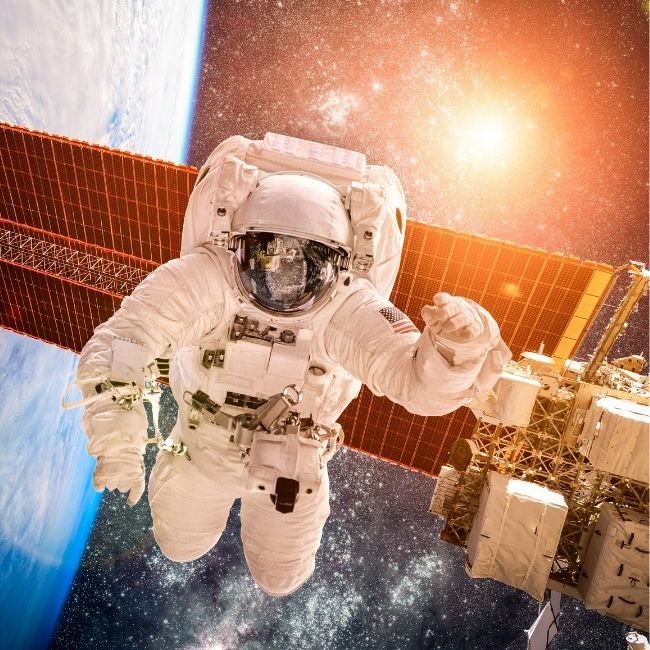
Space-based solar power station!
Recommended for Middle Grades
There are a lot of new technologies in the UK government’s “Net Zero Innovation Portfolio.” Space-based solar power is one of them. It has been thought of as a possible way to help the U.K. reach net zero by 2050.
Thus, U.K. officials are investigating a £16 billion plan to create a solar power space station. How would it function and what are the obstacles?
How does a Space-based solar power station work?
Space-based solar power collects solar energy in space and sends it to Earth. The idea itself isn’t new, but new technology has made it more likely that this could happen.
A huge solar power satellite in the space-based solar power system consists of solar panels. The solar panels produce electricity. Thereafter, the electricity is sent to the ground through radio waves at a very high frequency. A ground antenna turns radio waves into electricity, which is then sent to the power grid and used by everyone.
A space-based solar power station in orbit is always lit up by the sun. Thus it could be used to make electricity all the time. This is a big advantage over solar power systems on Earth. The solar power systems on Earth make electricity only during the day. Moreover, this depends on the weather. This is a big difference.
Challenges with Space-based solar power station projects!
- Robots in space build a lot of solar modules for a space-based solar power station. This type of station is called “modular.” It’s expensive to move all of the functional components into space.
- The space-based solar power station will take a lot of space shuttle launches to build. Also, there are a lot of emissions and costs that come with space launches.
- Space shuttles can’t be reused right now, which makes the idea costly.
- There could be space debris that could damage solar panels.
- The panels in space, on the other hand, are not covered by the Earth’s atmosphere, so they are not as safe. Sunlight that is more intense will cause them to get older faster which will cut the amount of power they can make.
- It is also challenging to get energy travel across long distances, like from a satellite in space to the ground using wireless power transmission. Based on current technology, only a small amount of solar energy would reach the Earth.
A few ongoing Space-based solar power station projects!
- High-efficiency solar cells and a system that can be used in space are being made by the Space Solar Power Project in the United States.
- China’s Bishan space solar energy station has the goal of having a working system in place by 2035.
- In the UK, a £17 billion space-based solar power project is thought to be a good idea based on a recent report from Frazer-Nash Consultancy. There will be small tests first, then a working solar power station in 2040.
Despite the difficulties, space-based solar power seems to be a good start. Experts believe that this technology will play a big role in the world’s energy supply in the near future.
What do our readers think about this technology? Write to us in the comments section below.
Curious Times is a place where we’re passionate about what we do. Consequently, we work hard every day to give our young readers the greatest possible experience and information. We also use Curious Times Weekly, The Curious Magazine, and My Expressions to communicate with our audience. As a result, our content is exciting and interesting for our readers.
Schoolchildren from all around the world appreciate and enjoy our materials. So, we’re always looking for ways to improve, and are curious to hear from you. This, above all, assists us in providing better service to you.
Thus, what sort of news stories capture your interest? In the comments section below? Please share your thoughts! For the simple reason that we enjoy hearing from our young readers. The following social media platforms allow you to communicate with us: WhatsApp, Instagram, Facebook, Youtube, Twitter, and LinkedIn.
0 (Please login to give a Curious Clap to your friend.)
